Cowboys, Hippies and Sustainable Design: Rich Michal '07 B.Arch, M.Arch
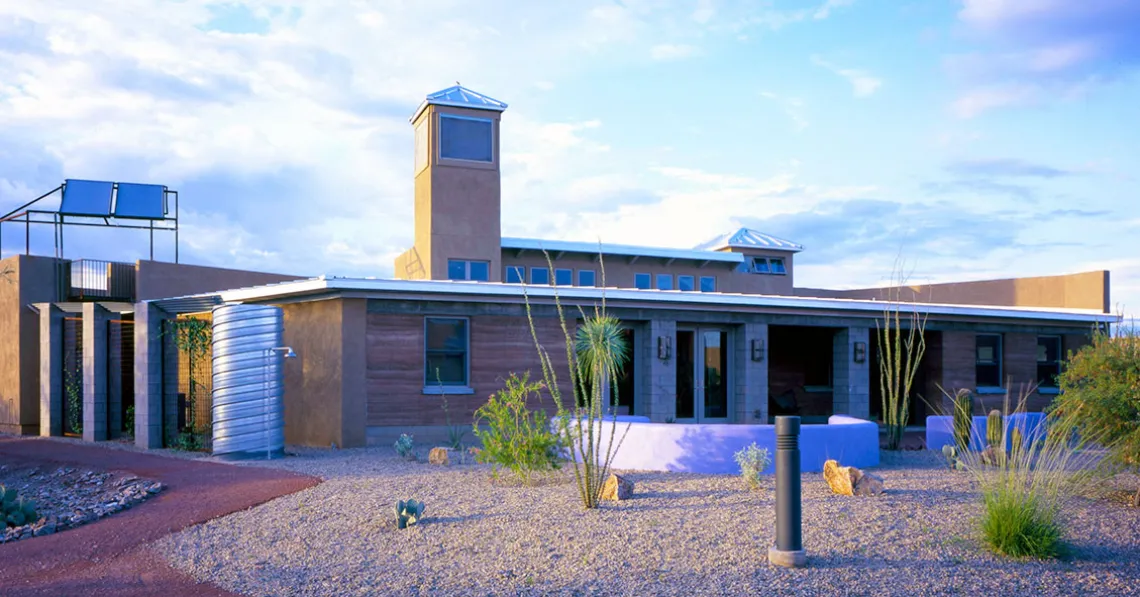
The passive solar residence designed and built by Rich Michal in his time at CAPLA. Photo by Terry Moore.
Rich Michal '07 B.Arch, M.Arch, Vice President and Chief Facilities Officer, Purdue Research Foundation
“Three things brought me to CAPLA to study architecture: the faculty, the Community of Civano where I designed and built my sustainable home, and Tucson itself—with its natural Sonoran desert beauty, surrounding mountains and unique cultural blend of cowboys and hippies.”
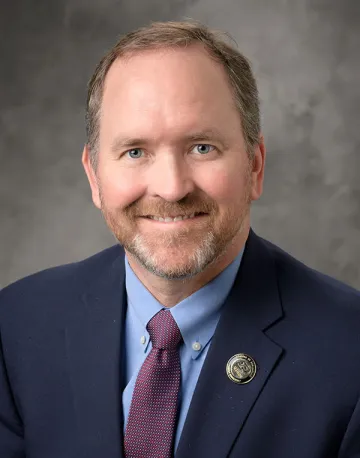
Rich Michal '07 B Arch, M Arch
Rich Michal, who is originally from the small town of Crawfordsville, Indiana, came to CAPLA to study architecture after earning a bachelor's degree in construction engineering and management from Purdue University and an MBA from Indiana University. Seeking to learn more about sustainable design—and designing and constructing one of the nation’s most energy-efficient on-grid homes in the country as his master’s thesis—he pursued the Bachelor of Architecture and Master of Architecture concurrently, graduating with both degrees in 2007.
Tell us about your work experience before you came to the University of Arizona to study architecture.
After receiving my undergraduate degree from Purdue, I worked four years in construction management for a firm that managed the capital projects for Eli Lilly and Company’s corporate headquarters in Indianapolis. I also worked seven years for the State of Indiana as an expert engineering witness and policy analyst in the regulated utility industry, which is part of the reason I became interested in sustainability and energy efficiency.
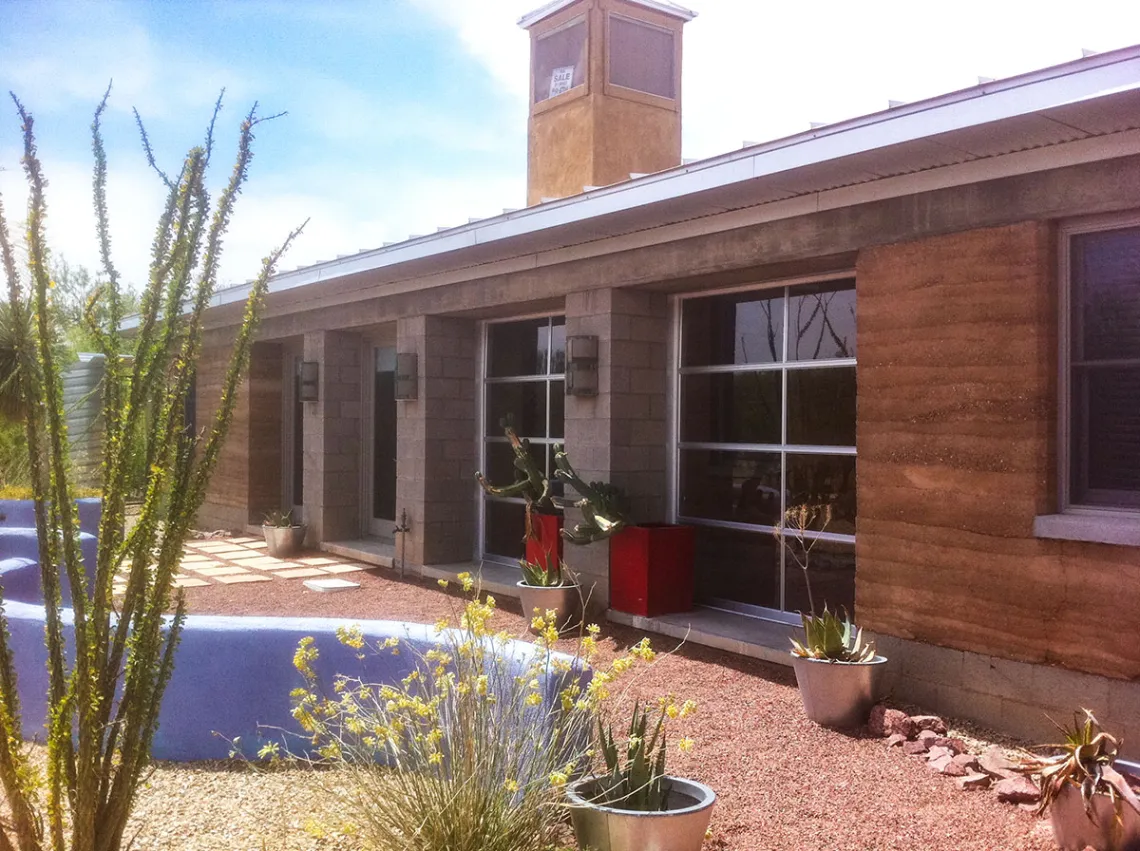
The passive solar residence designed and constructed by Rich Michal in his time at CAPLA. Photo by Rich Michal.
Tell us a bit about the work you’re doing now, nearly a decade and a half after graduating from UArizona.
I am the vice president over capital projects and facilities for the Purdue Research Foundation. We are the not-for-profit arm of Purdue University. I oversee five research parks throughout Indiana and the redevelopment of 400 acres at the west end of Purdue’s historic main campus. That redevelopment is designed to be a $1.2 billion walkable live-work-learn-play community.
What brought you to UArizona to study architecture?
First and most importantly, the faculty. Fred Matter was the director of the graduate program and probably should have told me to look elsewhere, but he didn’t. Instead, he worked with me to develop a program which would allow me to complete both my bachelor’s and master’s in architecture in six years. Throughout my six years on campus and even today, I consider Fred a dear friend and valued mentor.
Some of my favorite memories during my time in Tucson were meeting with Fred and Nader Chalfoun for drinks at the Arizona Inn Friday after studio. I took every class I could with Nader, served as a TA under him and co-authored two papers with him. Nader was the chair of my thesis committee and I couldn’t have done it without his mentorship and friendship. I also had the pleasure of working as a research assistant for Brooks Jeffery. Brook’s research methods class was one of the most important foundational classes I took as a graduate student and gave me the tools I needed to complete my 177-page master’s thesis. Brooks and his family adopted my wife, three children and me into his family and helped make Tucson a true home for 10 years. Other key faculty who attracted me to the program and impacted me during my six years as a student and four years as an adjunct include Rocky Brittain, Mary Hardin, Dick Ebletoff, Dennis Doxtater, Larry Medlin, Bill Stamm, Chuck Albanese and Laura Hollengreen.
Second was the Community of Civano, a New Urbanist, master-planned neighborhood in southeast Tucson. I was interested in studying sustainability and I can think of no better place to learn in real time than Civano. I was able to research and co-author a paper with Nader on several different homes in Civano, each built with different materials and technologies. I was then able to build upon that research to design and build my own passive solar sustainable home in the master-planned community for myself and my family. With Nader’s help as my thesis chair, I monitored the home’s performance for two years and published the entire process as my master’s thesis in 2007. In addition to sustainability, Civano turned out to be a wonderful community for my family, with its small community school and pedestrian-friendly design. It was also in Civano where I met some other incredible lifelong friends like Simmons Buntin and his family.
Finally, Tucson itself—with its natural Sonoran desert beauty, surrounding mountains and unique cultural blend of cowboys and hippies.
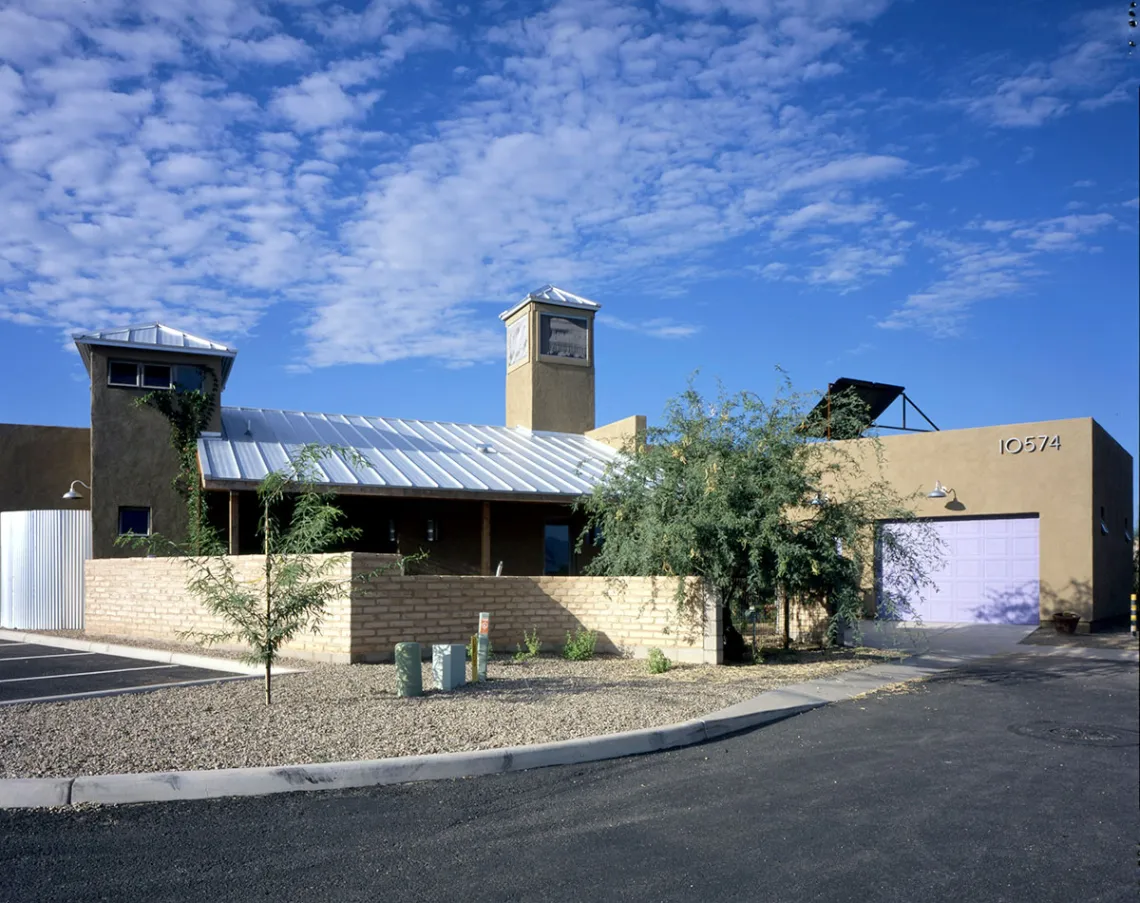
The home in Civano designed and built by Rich Michal. Photo by Terry Moore.
What did you find most rewarding in the CAPLA architecture programs and at the university?
The work and the people. I loved being able to work with the faculty I mentioned before to explore and pursue my interests. I also value my fellow grad and undergrad classmates including Drew Gorski, Lei Jin, Brian Falcon, Pete, Wes, Marty, Laura and the entire undergrad studio who put up with “the old guy.”
What did you find most challenging in the program?
To be honest, I had a lot of unlearning to do. It was quite a cultural shock not only to return to being a full-time student as a 34-year-old, but even more so given my engineering and business background. I had to learn how to navigate the studio format and culture. I was a linear thinker, focused on quickly finding the most efficient answer and moving on. I had to learn the hard way that there is more than one solution to any problem. I also had to learn a new way to communicate graphically as opposed to through the written or spoken word. As an old timer, this is still my greatest architectural deficiency—but the program helped me to overcome this deficiency through physical and computer-based modeling.
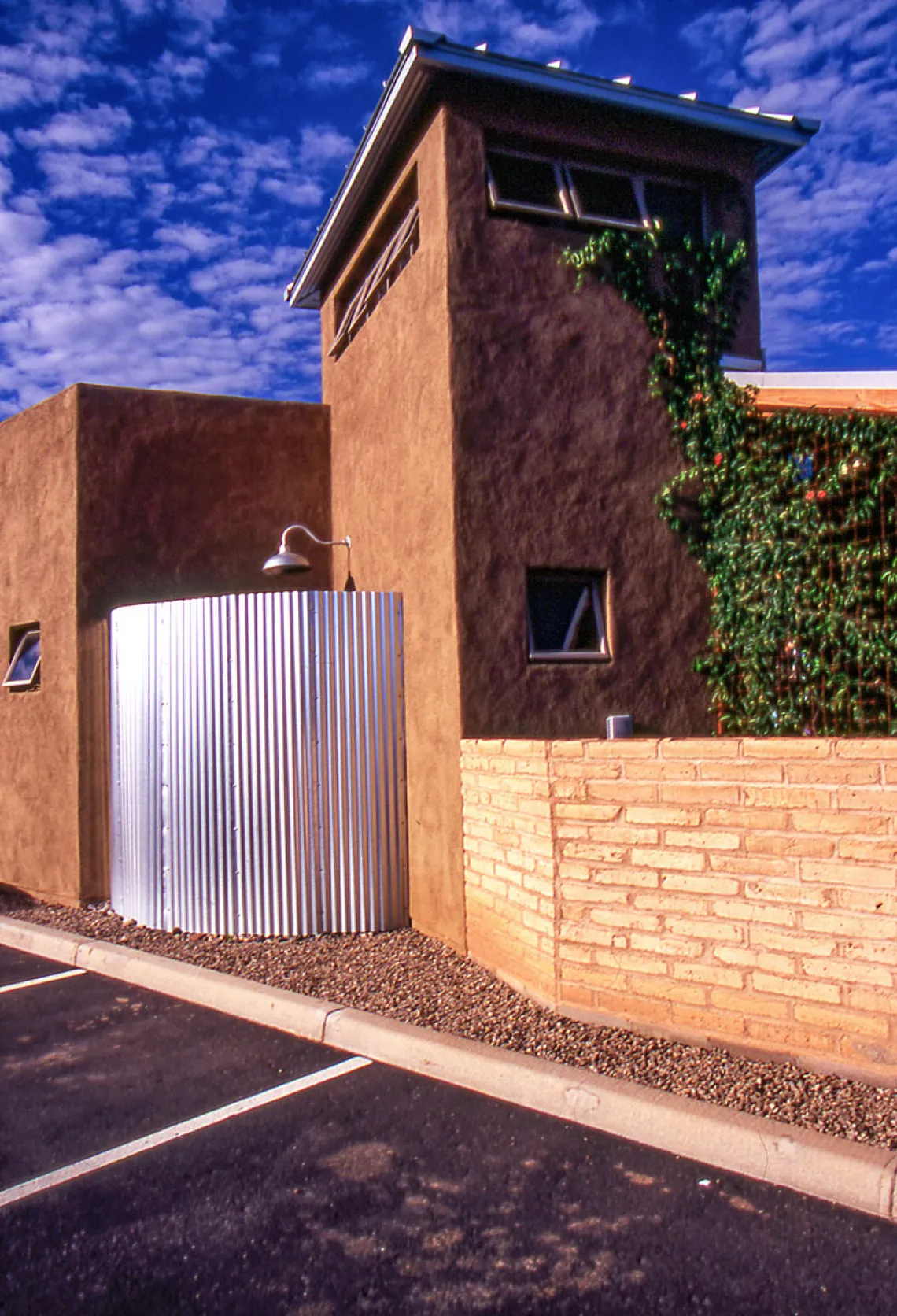
Cool tower and outdoor cowboy shower at the Michal residence. Photo by Terry Moore.
Tell us about your master’s project—the sustainable home in Civano.
One of the things that got me interested in sustainable architecture was David Easton’s book The Rammed Earth House. After reading it and meeting with Rocky Brittain and then working with Mary Hardin in the design/build studio, I knew I wanted to design and build a home with rammed earth. In the spring of my first year as a joint grad and undergrad, I was able to take Nader’s computer energy modeling course in which we analyzed the performance of several homes in Civano built with different materials. Nader and I then went on to publish a paper on this work. After completing this research under Nader, I felt like I knew how I could design and build an even more sustainable home in Civano incorporating rammed earth, passive solar orientation and a cool tower.
I spent my second year in the program designing the house and my third year in the program building the house. That was a challenge, as I had to leave the site every Monday, Wednesday and Friday afternoon to be in studio. I then spent the next two years monitoring the home’s performance with the help of dataloggers donated by Boston Scientific. The home performed great, using less than $200 a year in electricity to heat and cool. It was a great house and a great experience. But I had a lot of help not only from faculty and classmates but also sponsors, including Tucson Electric Power, the Arizona Masonry Guild, Central Arizona Block Company, Dow, and Hunter fans.
Learn more about the design of Michal's passive solar residence.
How did your experience at CAPLA further prepare you for the career you’ve undertaken since then?
It has taught me how to better communicate, how to problem solve, how to be creative and how to see things from more diverse and unique perspectives. I would not be where I am today if I had not for my 10 years at the college as a student and adjunct.
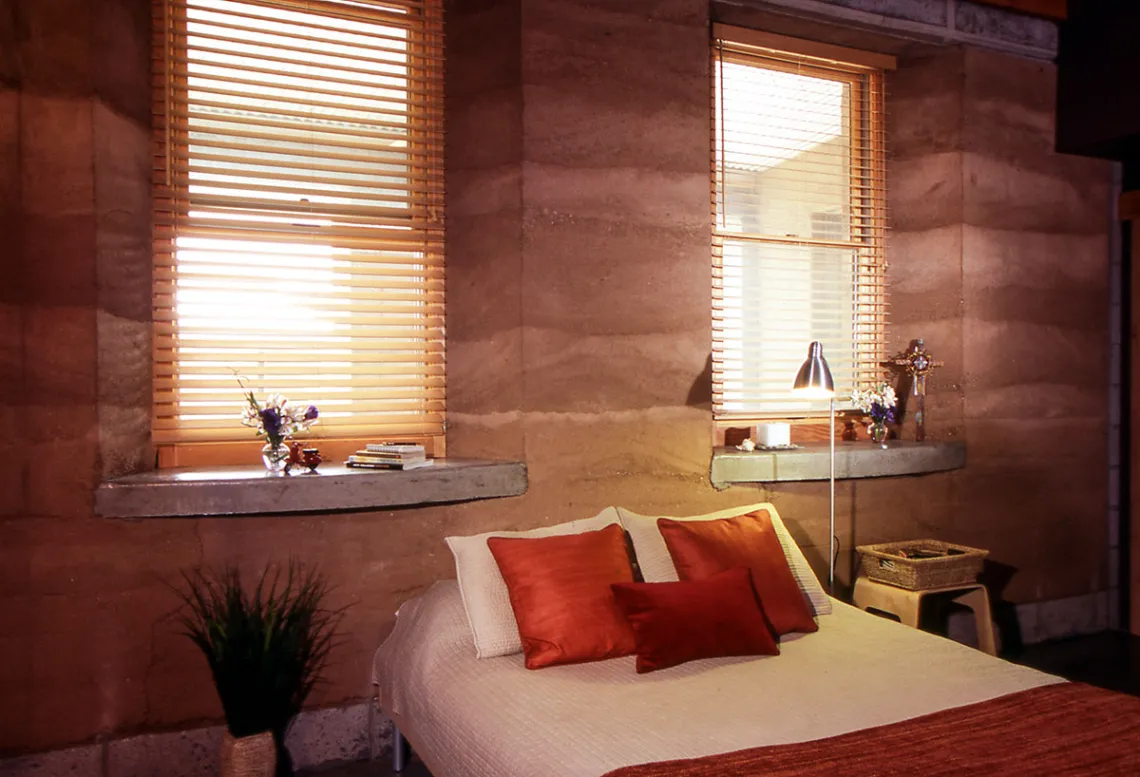
Master bedroom of the Michal home showcasing the rammed-earth wall on the south side of the home. Photo by Terry Moore.
What did you find unexpected in your career path and how did you benefit or adapt?
Where do I start? While my career path has by no means been linear, I have been fortunate that my many different jobs and degrees have all built upon one another and have been exciting and rewarding.
Beyond sustainable design, what are your passions?
My family, cooking and travel.
What advice do you have for current architecture students—or those considering pursuing a master’s in architecture?
Take full advantage of your time in the program and in the community to work with the faculty, your classmates and practitioners in Tucson. It is an incredible community that is talented, welcoming, and collaborative.
And for your career, never stop challenging yourself and learning. If you are not stretching, you are not growing.
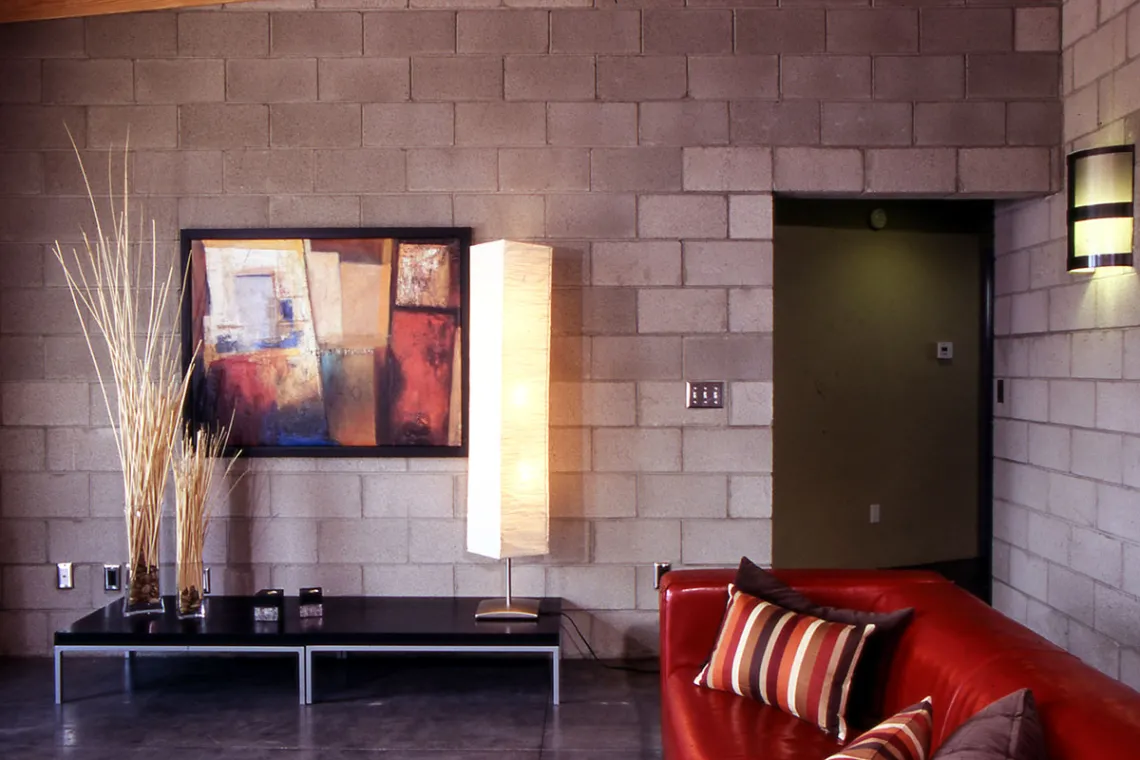
Main living area of Michal's passive solar residence in Civano. Photo by Terry Moore.



